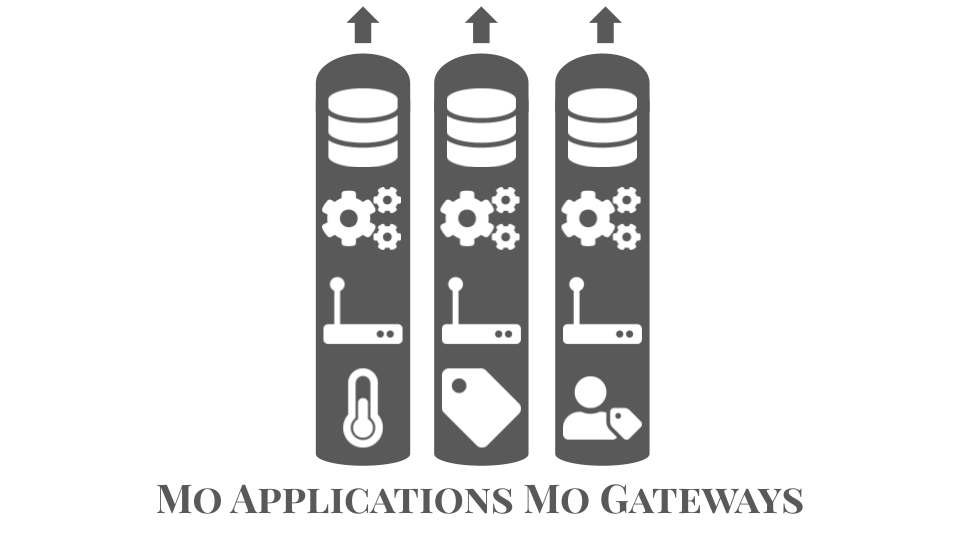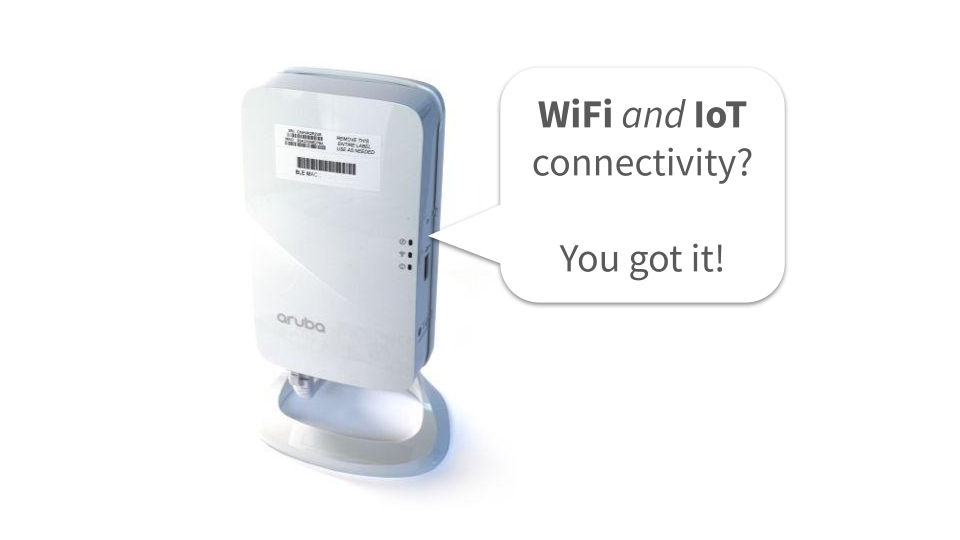This week HPE Aruba Networking announced, in this press release, their collaboration with Microsoft and ourselves, reelyActive, to facilitate migrating IoT workloads to the cloud.

And while that announcement may be modestly titled, the implication for infrastructure interoperability in the Internet of Things (IoT) is anything but! In fact, we’re prepared to argue that in our IoT timeline, starting from the founding of reelyActive in 2012, this represents the beginning of the Infrastructure 4.0 era. And in this blog post, we’ll explain why, starting from square “1.0”.
Silo 1.0
In the beginning there were silos. ⬆️ IoT devices—the overwhelming majority of which require gateway infrastructure to connect/communicate with IP networks and the Internet—often required the installation of infrastructure to fulfil but a single purpose. In other words, a dedicated set of hardware infrastructure and devices for each application, i.e. parallel infrastructure for parallel applications.

But silos do not an Internet of Things make…
Reel 2.0
Shit just got reel. 🙄 Yes, we played on that meme when we founded reelyActive to solve the infrastructure problem, initially for real-time location systems (RTLS), with the introduction of our novel reel architecture, which, in 2013, we openly published in a scientific article Towards a simple, versatile, distributed low-power wireless M2M infrastructure. The idea was simple: a single power-and-communication standard over ubiquitous network cables allowed the daisy-chaining of “reelceiver” gateways that could each communicate with IoT devices over a specific radio protocol.

A single infrastructure for both sub-GHz and Bluetooth Low Energy? No problem, as we demonstrated in 2013.
A building-wide infrastructure to not only relay every Bluetooth Low Energy packet to the cloud for any purpose, but also facilitating blue-dot mobile indoor positioning? No problem, as we demonstrated in 2018.
Silos no more! And then the proverbial light bulb went off…
Lighting 3.0
Enter the Enlightenment (or not). 💡 Why go through the trouble of adding infrastructure when there’s already ubiquitous infrastructure throughout physical spaces: electric light!?! By about 2016, we were engaging in serious conversations with the VPs of IoT from Philips/Signify and Acuity Brands, who, like us, were reflecting on just that. And while, ultimately, those key industry players did not pursue the opportunity, we were delighted (pun intended) to collaborate with Lunera Lighting, a challenger prepared to go all-in on ambient computing, in what would effectively be for them a make-or-break bid.

In our Light hears ahead of its time blog post, we argued that connected lighting infrastructure could, at the literal flip-of-a-switch, enable building-wide IoT. Indeed, the Infrastructure 3.0 era was bright with promise…until the lights went out at Lunera the following year.
Why not find another option then…
Access Point 4.0
Delight in WiFi’s evolution. 🛜 Would you rather spend a day in the dark or a day without WiFi? Yes, that’s a rhetorical question to underscore the near-ubiquity of another infrastructure, WiFi, which, unlike standard lighting, inherently benefits from Internet-connectivity. Of course, only a fraction of IoT devices are WiFi-capable, but it turns out that it’s easy enough to add a Bluetooth Low Energy radio to an access point (AP). And vendors have had the foresight for years to do exactly that, extending their APs’ connectivity capabilities beyond IP devices to accommodate low-power-wireless IoT devices too.

So why then do we believe that the Infrastructure 4.0 era begins only now?
The simplicity and scalability that this collaboration enshrines is what finally marks the start of the Infrastructure 4.0 era.
Simplicity
With just a few clicks, an organisation can relay, securely and continuously, the data stream from the IoT devices in their physical spaces, to Microsoft Azure, a cloud platform with which they are likely already familiar. Aruba IoT Transport for Azure introduced this functionality two years ago, and now with the addition of our open source data converter, Pareto Anywhere for Azure, the data is rendered intelligible—regardless of the underlying IoT devices and technologies—and can be put to use immediately.

For the average organisation, there’s little to think about: it just works.
Scalability
Thanks to foresight, infrastructure is already present at scale, globally and across verticals:
Roughly 35 million of the Aruba APs already deployed are capable of migrating IoT workloads to the cloud today.
Mike Tennefoss, VP of IoT and Strategic Partnerships at Aruba
Moreover, tens of billions of Bluetooth Low Energy IoT devices have shipped over the past decade alone, with over 5 billion now shipping annually. And our open source advlib libraries, at the core of our Pareto Anywhere middleware, ensure that the data from each and every one is converted into a standard format, regardless of vendor or model, or whether running cloud or edge.
For the average organisation, everything is already in place and ready to scale at any pace.
The Infrastructure 4.0 Era
You don’t have an Internet without infrastructure, nor do you have an Internet of Things without infrastructure. That’s why our collaboration with HPE Aruba Networking and Microsoft is arguably the biggest step forward for the Internet of Things in our decade-long history: infrastructure now meets interoperability at a massive scale—free from artificial constraints. Enter the Infrastructure 4.0 era!

Comments
2 responses to “Infrastructure 4.0”
[…] that we’ve come to expect to provide us connectivity everywhere, as we explain in our recent Infrastructure 4.0 post. The problem that reelyActive is solving today is how to make any physical space context-aware […]
LikeLike
[…] of Bluetooth Low Energy infrastructure, which may already be present, as we explained in our recent Infrastructure 4.0 […]
LikeLike